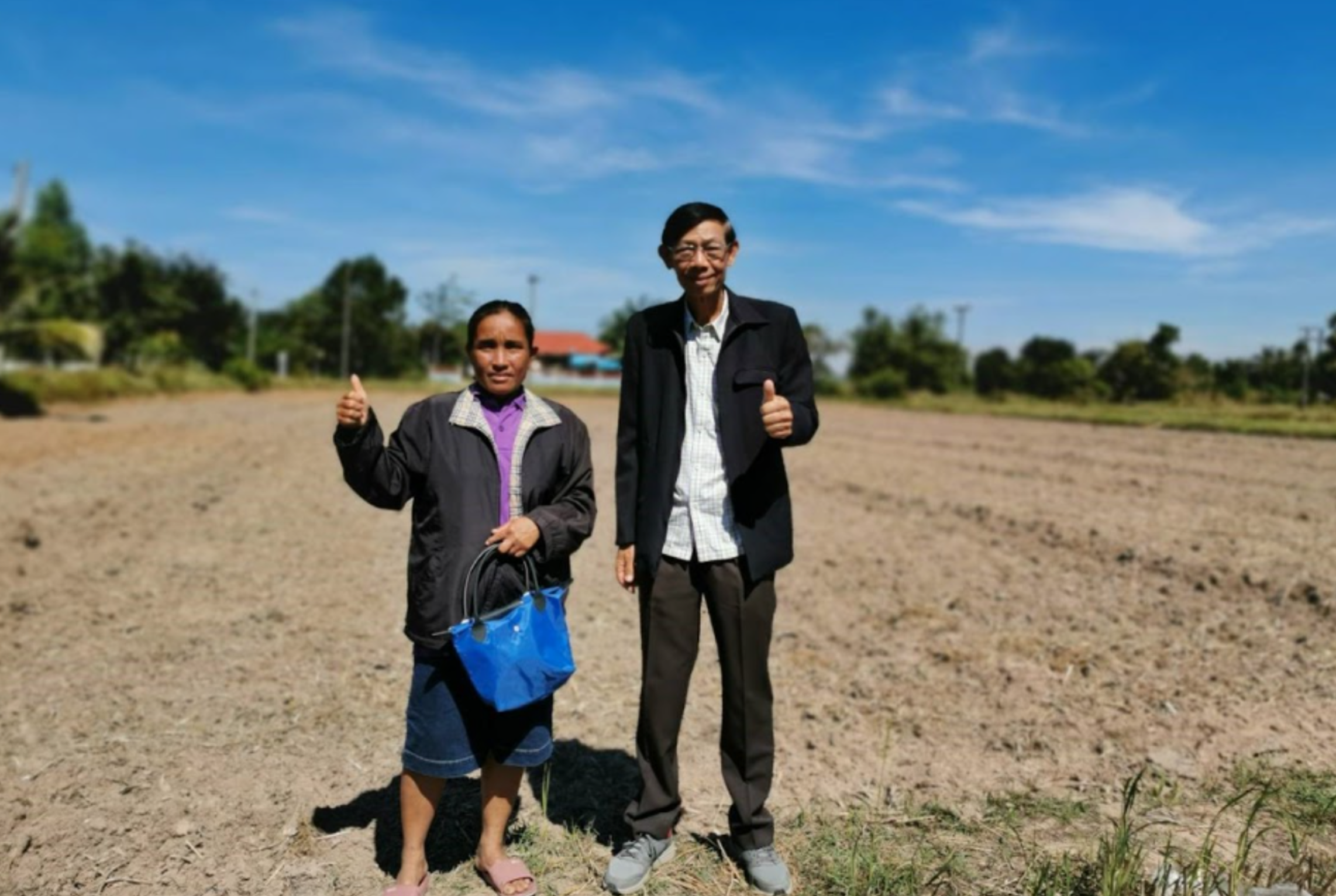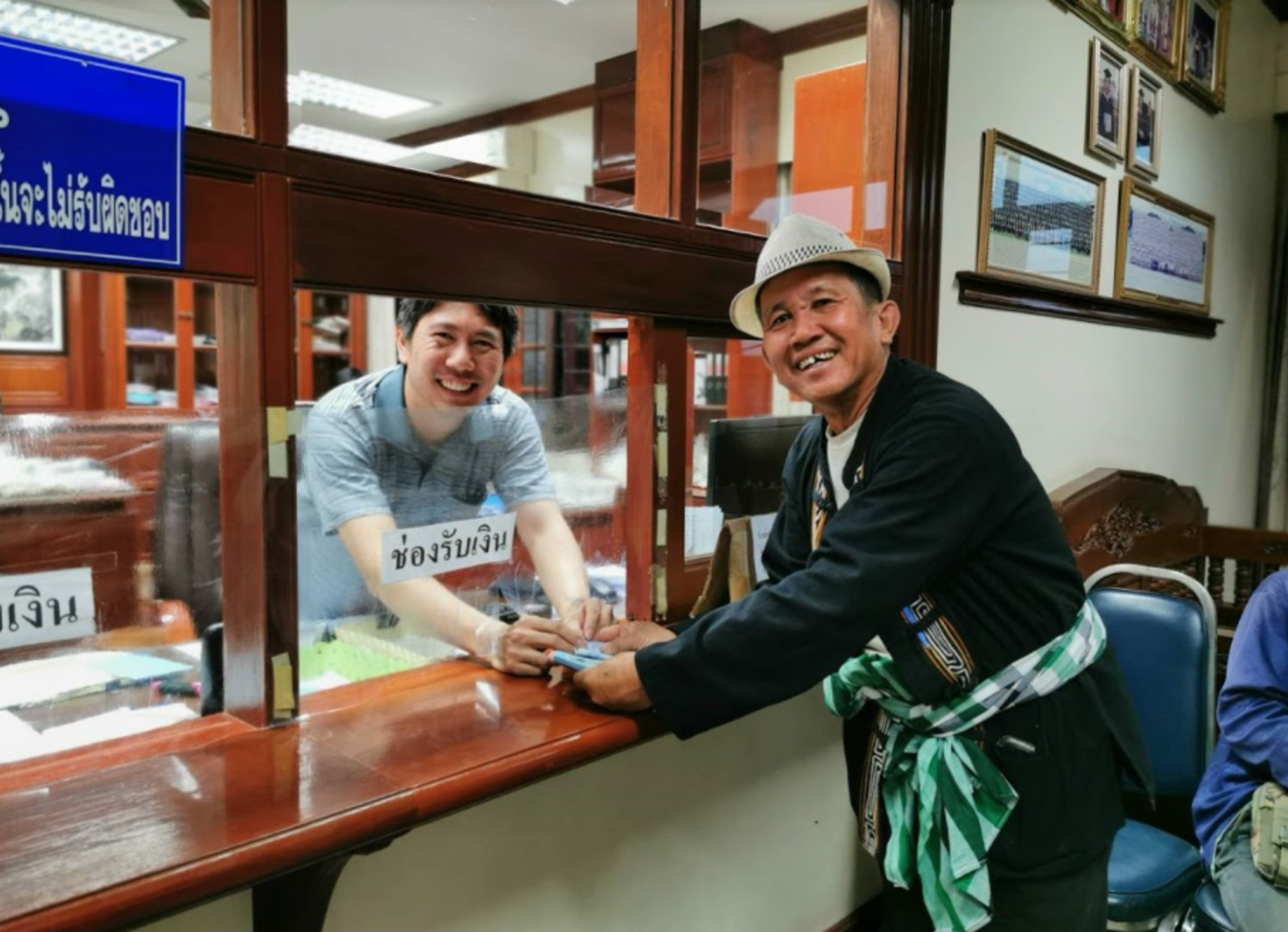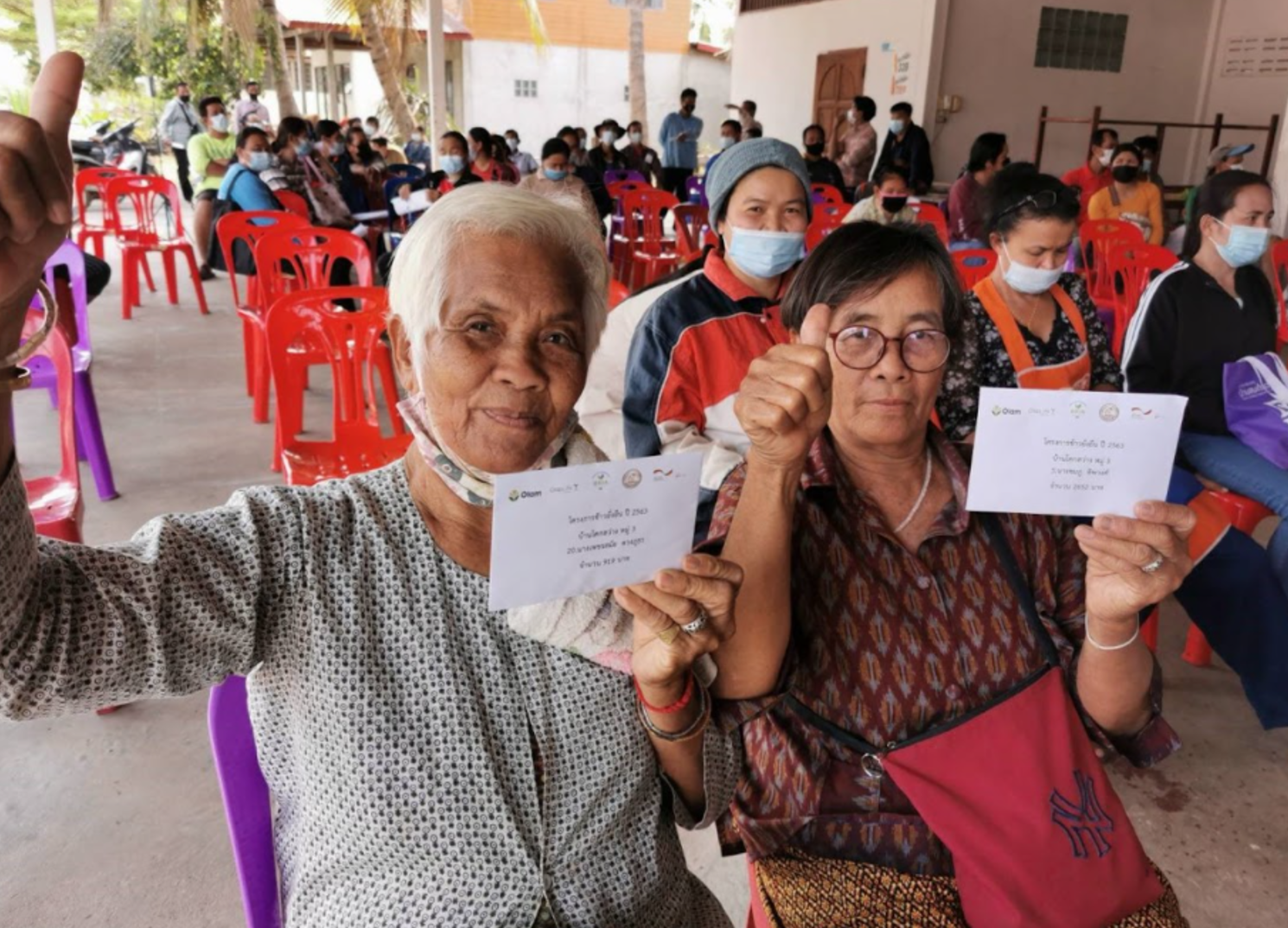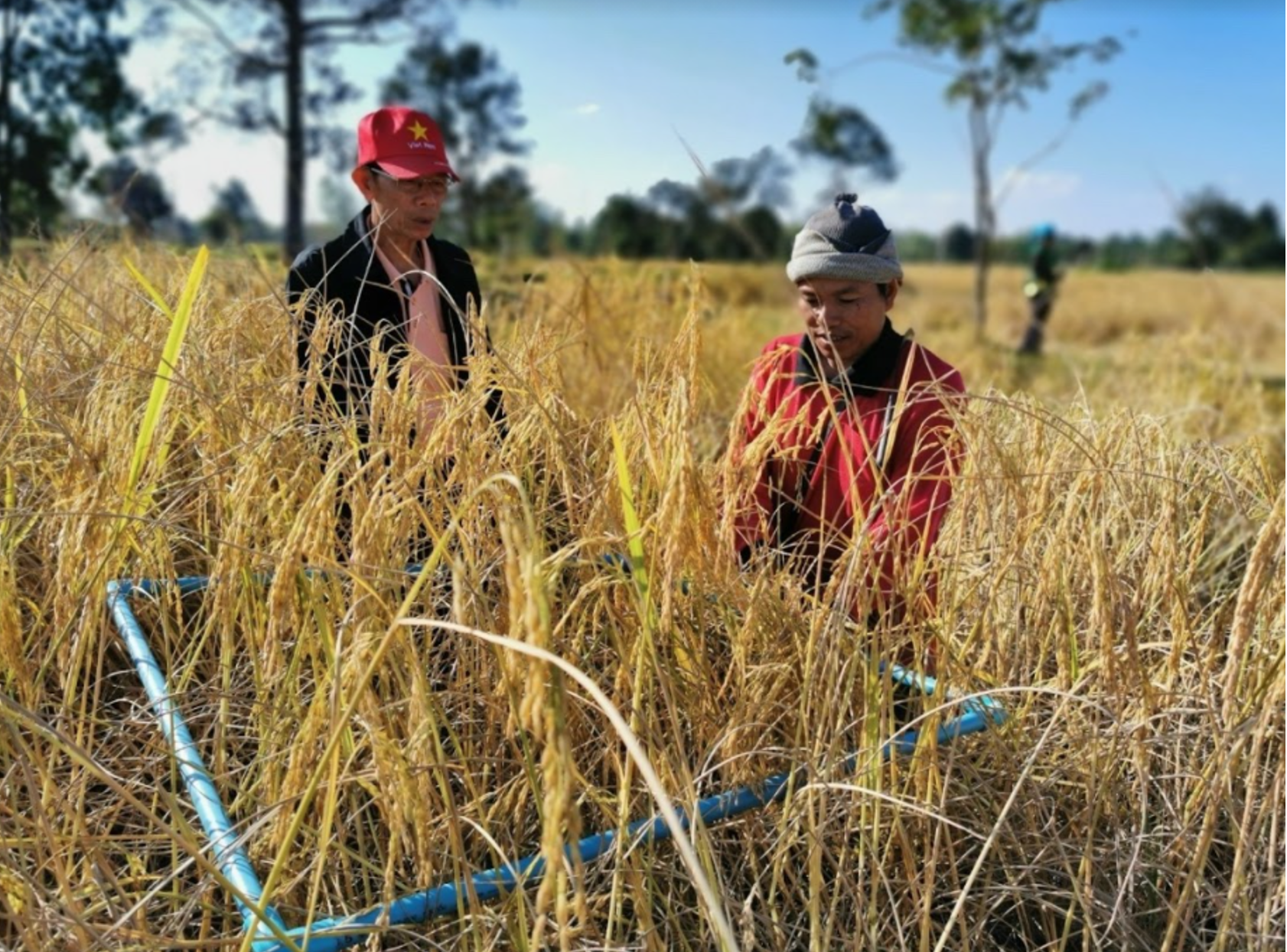Connecting farmers to sustainable supply chains and beyond
It has been over 20 years since Udorn Khamwongsa has been switching her career from being an electrician in northern Thailand to become a full-time farmer in her hometown of Ubon Ratchathani’s Warin Chamrap district, for over 20 years.

As the third generation of farmer in the family and representative of the community, she is interested in seeking a new method to improve rice yield and farming productivity. The 43-year old single mother will always seek time off her busy farming schedule to participate into trainings and seminars held by agricultural officials and other non-governmental organisations.
Since late 2019, she has attended training activities in the market-oriented smallholders value chain project Thailand (MSVC TH) introduced by Deutsche Gesellschaft für Internationale Zusammenarbeit (GIZ) GmbH in cooperation with the Department of Rice, Olam (Thailand) Limited and Crop Life.
Initiated in 2018, the project enhances the importance of connecting the market with farmers and fully supports market driven through capacity building among farmers and systemising sustainable rice cultivation practices. The project was piloted in Ubon Ratchathani province housing the country’s largest rice growing areas of 4.1 million rai.
After a year of participating into a series of training activities for farmers, she found the crop calendar introduced during the training session is very useful for her to manage the rice farming. She knows the exact time for seeding, sowing, fertilising, and harvesting. The training session also enables farmers to learn about their soil quality and how to make tailor-made fertiliser formula suitable for soil conditions of each member’s land plots. She also put into practice recommendations given by instructors and project staff on efficient use of fertiliser and chemicals which significantly helps farmers reduce the rice farming cost
The reality is Thai rice farmers usually overuse fertilisers and pesticides. Excessive use of chemicals destroys and creates imbalances in soil fertility. “In the past we just apply as much fertiliser as we’d like. No calculation whatsoever. Thanks to this course, I learn when and how to effectively fertilise my rice paddies for improving soil quality and stabilising the ecosystem,” she said.
Ms Udorn has learned that farmers should fertilise the rice paddies by using tailor-made fertilisers and split application on the right time with the recommended amount. Because of this method, she could reduce the use of fertiliser by 40%.
Dry Direct Seeding Machine technology also helps strengthen seedlings’ health. Seedlings can better withstand pests and that farmers do not have to use pesticides, leading to rice farming cost reduction.
Apart from the rational use of fertilisers and direct seeding technology, know-how on good tillage or soil ploughing practice help a farmer like Koon Songsuk, the other farmer member in the province’ Lao Suea Kok district reduce rice residue while improving quality of soil in his rice paddies
Despite facing climate change and global rice price drop, knowledge learned from the training has enabled both farmers joining the project to enhance quality of rice grains. Rice harvested from the two farmers’ rice paddies are mature and healthy. There are not many admixtures and broken grains. Although both could not harvest much rice amount from the recent harvest season due to flooding, such good characteristic of rice grown by farmers joining the project are of good quality and on demand by millers in the community.
Winyoo Weerananthawet, manager of Kit Udom Rice Mill, a miller in Trakan Phuet Phon District, said he participated into the MSVC project mainly due to rice quality. There are not many admixtures compared to usual rice products. Following briefing by the project staff and site visit, farmers joining the project do not burn off their rice residue and agri-waste to help reduce greenhouse gas emission (GHG)

“As a miller and rice buyer, we trust in the rice products from farmers joining the project are of good quality. We feel proud to support the sustainability of Thailand’s rice supply chain,” he said.
After buying the rice products, his company together with Olam also distribute to their clients for export. The company also helps raise consumer awareness about the sustainable rice project on social media. The products receive a good attention from consumers. He is hopeful that involved sectors including the government would help promote the importance of sustainable rice and adopt the MSVC project as a model for expanding the production to other parts of the country.
Montree Promaluksan, Field Manager of the MSVC TH project, said up to 11,000 tonnes of Hom Mali rice valued at 113 million baht were produced and delivered to the market by a total of 2,411 farming members during the recent harvest season late last year.
Apart from income earned from selling the harvested rice to the millers, farmers joining the project recently received the extra cash of 100-150 baht/tonne on top of the amount of Hom Mali rice sold to millers. The extra cash is distributed for boosting morale and offer local farmers an incentive to commit to the project’s key goal – sustainability.

It is not compulsory for farmers joining the project to sell rice to millers signing a memorandum of understanding with the MSVC TH project. As the project has been expanded to cover another two northeastern provinces Surin and Si Saket and the number of farmers joining the project have increased to 16,000, Mr Promaluksan is hopeful that up to 60,000 tonnes of unmilled, export-quality Thai Hom Mali Rice will be produced under the Sustainable Rice Platform (SRP) and distributed to the market this year.
Key physical appearance for millers and buyers to determine rice quality
- Quality: free from other rice varieties, weeds, hays
- Moisture: less than 25% is considered desirable
Key Points
Connecting farmers to sustainable supply chains and beyond
- Initiated in 2018, the project enhances the importance of connecting the market with farmers and fully supports market driven through capacity building among farmers and systemising sustainable rice cultivation practices.
- The project was piloted in Ubon Ratchathani province housing the country’s largest rice growing areas of 4.1 million rai. It was later expanded to cover another two northeastern provinces Surin and Si Saket and the number of farmers joining the project have increased to 16,000.
- Up to 60,000 tonnes ofunmilled, export-quality Thai Hom Mali Rice will be produced under the Sustainable Rice Platform (SRP) and distributed to the market this year


